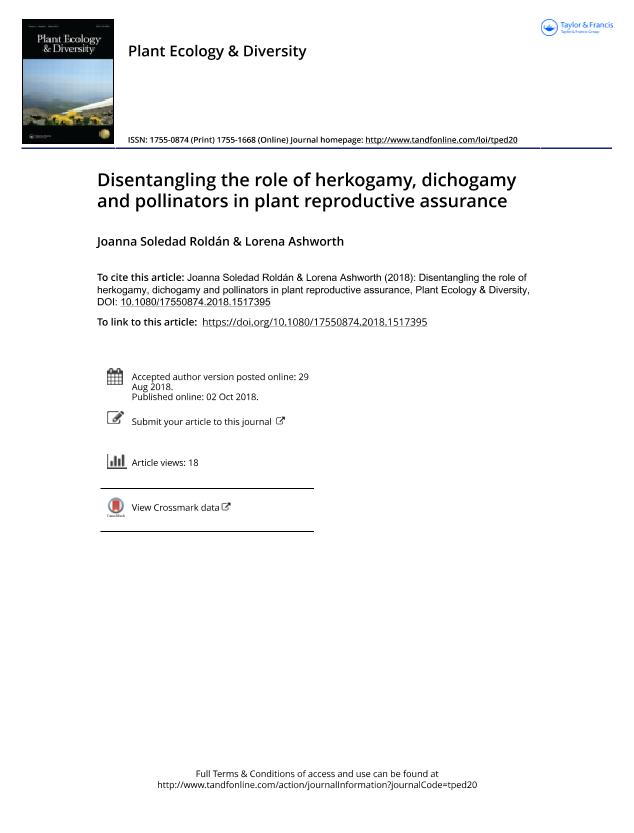Artículo
Disentangling the role of herkogamy, dichogamy and pollinators in plant reproductive assurance
Fecha de publicación:
05/2018
Editorial:
Taylor & Francis Ltd
Revista:
Plant Ecology & Diversity
ISSN:
1755-0874
e-ISSN:
1755-1668
Idioma:
Inglés
Tipo de recurso:
Artículo publicado
Clasificación temática:
Resumen
Autonomous selfing can be favoured by reduced floral herkogamy, dichogamy and pollinator visitation. Autonomous selfing diminishes as pollinator abundance increases; however, the ways pollinators contribute to such result have not been tested. Pollinators can reduce the occurrence of autonomous selfing by two not mutually exclusive mechanisms: successful pollen deposition on stigmas and pollen removal from anthers. Aims: We tested the role of herkogamy and protandry on autonomous selfing and the role of pollinators to reduce it via pollen removal. Methods: We studied Lepechinia floribunda (Lamiaceae) in two natural populations in the Chaco Serrano forest, Argentina. Pollination treatments were conducted to test if floral herkogamy and pollen removal by one pollinator visitation decreased seed set by autonomous selfing. Results: Seed set in pollinator exclusion and emasculation treatments were higher in flowers with lack of herkogamy and selfing increased seed set only in these flowers. Pollen removal during the male phase decreased by 72% the probability of autonomous self-pollination. Conclusions: Flowers with lack of herkogamy are reproductively more advantageous than flowers with approach herkogamy independently of pollinator abundance. We demonstrated for the first time that only one pollinator visitation during the male phase can strongly decrease autonomous selfing by pollen removal.
Archivos asociados
Licencia
Identificadores
Colecciones
Articulos(IMBIV)
Articulos de INST.MULTIDISCIPL.DE BIOLOGIA VEGETAL (P)
Articulos de INST.MULTIDISCIPL.DE BIOLOGIA VEGETAL (P)
Citación
Roldán, Joanna Soledad; Ashworth, Lorena; Disentangling the role of herkogamy, dichogamy and pollinators in plant reproductive assurance; Taylor & Francis Ltd; Plant Ecology & Diversity; 11; 3; 5-2018; 383-392
Compartir
Altmétricas




